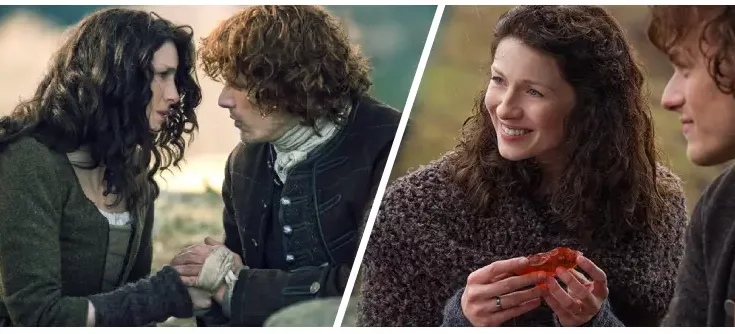“There’s no place on earth with more magic and more superstition mixed into its daily life than the Scottish Highlands.” ~ Diana Gabaldon, Outlander
“Superstitions, those peculiar beliefs and rituals that seem to defy logic, have been part of human culture for centuries.” They provide a sense of control and comfort when faced with situations that are beyond our control. [1]
Demonic possession: Around the Age of Enlightenment, “the Highlanders in the rural villages and more remote areas of Scotland, even highly educated men and women, still held a strong belief in the power of the devil and demonic possession.” [2] Various methods of testing for demonic traits were developed, often resulting in an untimely death.
The legend of the Black Kirk says it possesses the souls of those who go there, making them fall ill and die. Not realizing that the person could be ill for another reason, exorcism was often used to rid the soul of demonic possession and prepare the soul for its journey. Adventurous young boys were known to visit the site on a dare. Some mistakenly ate poisonous flora, confusing it with harmless wood garlic. Father Bain performed an exorcism on such a child to rid him of the demon without success, but Claire diagnosed the child as having been poisoned and saved his life by giving him an antidote. This leads Father Bain to tell her that he “smells the vapors of hell” on her in episode 103.

An example of testing for demonic possession occurs in episode 603, when a group of boys put baby Henri-Christian in the river in his basket to see if he was “the devil’s seed” because of his dwarfism. A vigilant Roger spots the basket floating by, saving the baby. The boys tell him they had heard that if he floated, it was a sign of being possessed. Roger lets them know that “he floated because he was in a basket.”
Love potions, charms, and ill wishes: Believed to hold special power over another person, Laoghaire asked Claire to make her a love potion “for moving a lad’s heart forward” in episode 104. Claire gave her horse dung. In episode 109, a jealous Laoghaire puts an ill wish meant to bring pain, harm, or even death under Jamie and Claire’s bed.
Malva makes a love charm out of a spiral of stones using seaweed and human finger bones in episode 605. Then in episode 606, she makes a broth using parts from the dead Sin Eater to poison Claire and her father, Tom Christie, so that she could have Jamie for herself.

Magic, Witchcraft, and La Dame Blanche: In France, King Louis asks for Claire’s assistance in determining the guilt or innocence of two men accused of practicing the art of black magic—sorcery for evil purposes. One of the accused men claims that she is a witch.
Claire admits she is a white witch who practices white magic “to influence the course of events for good purposes or to counteract evil” because she “knows too much about medicine and the future. Many in those times believed it was associated with witchcraft.” [2]
King Louis wants to test the men using a serpent, but Claire prefers to use Bitter Cascara, which will sicken but not kill the men.
Jamie told Prince Charles that Claire was La Dame Blanche, a white witch, as a means of staying faithful to her at the brothel, Maison Elise, without appearing unmanly to the other men during their meetings.

Other commonly held beliefs from episodes of Outlander:
The presence of a crow during childbirth could result in harm or death, so the bird must be killed.
Fergus believes that Henri-Christian was born with dwarfism because he was beaten in the womb. E602
You must leave a tent panel pulled back or a door open so the soul of a recently departed person has an outlet to the spirit world. E708
The Ninian’s Spring, also called the Liar’s Spring, “has a stink to it like the fumes of hell itself, but if you drink from it and are untruthful, it will burn your gizzard,” according to Dougal MacKenzie. E106
The ‘mark of the devil’ is a small pox vaccine scar that both Claire and Geillis have, being time travelers. E111
Do you ever wonder where the expression “black sheep of the family” originated? “Some farmers, particularly in the north of Scotland, believe that the birth of a black-faced sheep brings bad luck for all the flock.” [3]

Superstitions continue to influence our daily lives. Knocking on wood is one of the most common superstitions today, and many brides still have fun with the traditional ritual for good luck, happiness, and prosperity: “Something old, something new, something borrowed and something blue. And a silver sixpence for her shoe.” While technically ahead of its time, Jamie took care of this detail for Brianna on her wedding day.
For more stories of the Scottish Highlands read Folklore and Legendary Creatures in Outlander.
Reference: [1] Care Counseling: The Psychology of Superstitions; [2] Outlander Cast: The Symbolism and Superstitions in Outlander; [3] Visit Scotland: Unwrapping Scottish Superstitions




